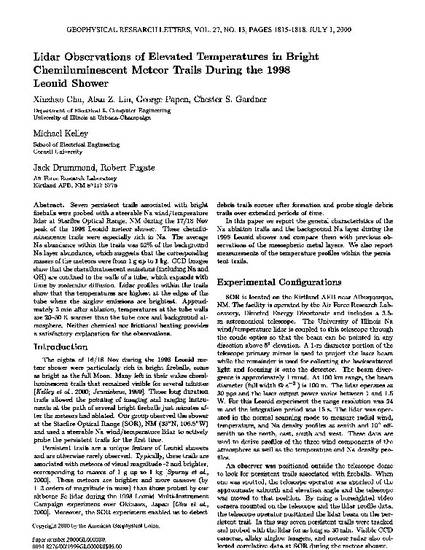
Seven persistent trails associated with bright fireballs were probed with a steerable Na wind/temperature lidar at Starfire Optical Range, NM during the 17/18 Nov peak of the 1998 Leonid meteor shower. These chemiluminescence trails were especially rich in Na. The average Na abundance within the trails was 52% of the background Na layer abundance, which suggests that the corresponding masses of the meteors were from 1 g up to 1 kg. CCD images show that the chemiluminescent emissions (including Na and OH) are confined to the walls of a tube, which expands with time by molecular diffusion. Lidar profiles within the trails show that the temperatures are highest at the edges of the tube where the airglow emissions are brightest. Approximately 3 min after ablation, temperatures at the tube walls are 20-50 K warmer than the tube core and background atmosphere. Neither chemical nor frictional heating provides a satisfactory explanation for the observations.
Available at: http://works.bepress.com/alanliu/62/
